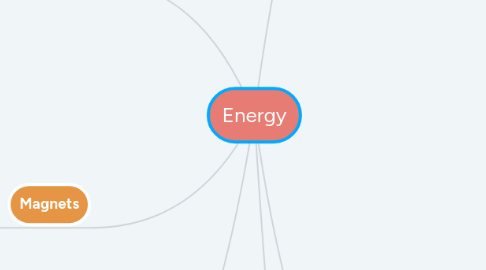
1. Forms and Changes
1.1. Forms (MR.CENT)
1.1.1. Mechanical Energy (EXAMPLES)
1.1.1.1. Kinetic Energy
1.1.1.2. Potential Energy
1.1.2. Radiant Energy
1.1.3. Chemical Energy
1.1.4. Electrical Energy
1.1.5. Nuclear Energy (MADE BY...)
1.1.5.1. Fission
1.1.5.2. Fusion
1.1.6. Thermal Energy
1.2. Law of Conservation of Energy
2. Magnets
2.1. Magnetism and Electricity
2.1.1. Current (CREATES A...)
2.1.1.1. Magnetic Field (WHICH MAKES A...)
2.1.1.1.1. Electromagnet
2.2. Electromagnet Applications
2.2.1. Electric Generators
2.2.2. Electric Motors
3. Electrical Circuits
3.1. Semiconductors (TYPES)
3.1.1. Diodes
3.1.2. Transistors
3.2. Types of Circuits
3.2.1. Series Circuit
3.2.1.1. Chemical Cell
3.2.2. Parallel Circuit
3.2.2.1. Chemical Cell
3.3. Circuit Aspects
3.3.1. Current
3.3.2. Voltage
3.3.3. Resistance
3.4. Conductors (TYPES) (with the exception of electrolytes)
3.4.1. Electode
3.4.2. Electrolyte
3.4.2.1. Note: Electrolytes are conductors but not every conductor is an electrolyte.
4. Electromagnetic Spectrum
4.1. EM Waves/Rays (TYPES)
4.1.1. Radio Waves
4.1.2. Microwaves
4.1.3. Infrared Rays
4.1.4. Ultraviolet Rays
4.1.5. X-Rays
4.1.6. Gamma Rays
4.2. Transverse Waves (ASPECTS)
4.2.1. Wavelength
4.2.2. Amplitude
4.2.3. Frequency
4.2.4. Crest
4.2.5. Trough
4.3. Other Wave Properties
4.3.1. Reflection (TYPES + LAW)
4.3.1.1. Concave Mirrors
4.3.1.2. Convex Mirrors
4.3.1.3. Law of Reflection
4.3.2. Refraction (TYPES)
4.3.2.1. Concave Lenses
4.3.2.2. Convex Lenses
4.3.3. Diffraction
4.3.4. Interference
5. Sound
5.1. Longitudinal Waves (ASPECTS)
5.1.1. Wavelength
5.1.2. Frequency
5.1.3. Amplitude
5.1.4. Compressions
5.1.5. Rarefractions
5.2. Reflection (TYPES)
5.2.1. Echolocation
5.2.2. Sonar
5.2.3. Medical Ultrasound
5.3. Interference (TYPES)
5.3.1. Destructive (EXAMPLES)
5.3.1.1. Noise Canceling Headphones
5.3.2. Constructive (EXAMPLES)
5.3.2.1. Acoustic Rooms
5.3.2.2. Bands or Orchestras
5.4. Resonance
6. Heat and Temperature
6.1. Transfer of heat
6.1.1. Conduction (TYPES)
6.1.1.1. Thermal Conductor
6.1.1.2. Thermal Insulator
6.1.2. Convection
6.1.3. Radiation
6.2. Phase Change (TYPES)
6.2.1. Freezing
6.2.2. Freezing Point
6.2.3. Boiling Point
6.2.3.1. Vaporization
6.2.3.2. Condensation
6.2.4. Melting Point
6.3. Scale (one example)
6.3.1. Kelvin Scale
6.3.1.1. Absolute Zero

